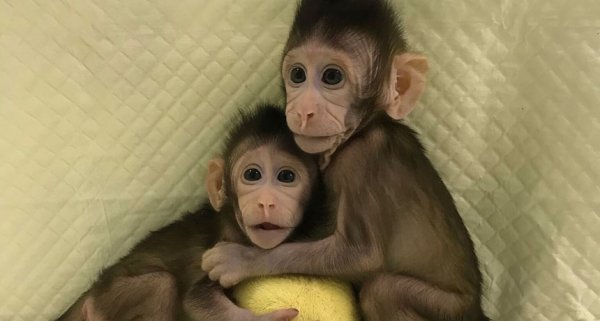Chinese Scientists Successfully Clone Monkeys. Are We Next?
Tags: News

Using a method known as somatic cell nuclear transfer (SCNT), researchers at the Chinese Academy of Sciences Institute of Neuroscience in Shanghai have successfully cloned monkeys.
Zhong Zhong and Hua Hua are a pair of identical long-tailed macaques that were recently born in China. However, they are not your average set of twins, instead they are the product of a groundbreaking experiment. They were born two weeks apart and are both clones of the same donor culture of fetal monkey cells.
It is important to note that (technically) this is not the first time that monkeys have been cloned. In 1999, researchers ‘cloned’ a rhesus macaque by splitting a macaque embryo into multiple parts. However, this is the first time that the SCNT method has been used to clone primates.
“We tried several different methods but only one worked,” Qiang Sun, senior author of the study and Director of the Nonhuman Primate Research Facility at the Chinese Academy of Sciences Institute of Neuroscience, says. “There was much failure before we found a way to successfully clone a monkey.” He added: “You can produce cloned monkeys with the same genetic background except the gene you manipulated. This will generate real models not just for genetically based brain diseases, but also cancer, immune or metabolic disorders, and allow us to test the efficacy of the drugs for these conditions before clinical use.”
The SCNT method, in theory, could also be used to clone humans. So, are we next? “There is now no barrier for cloning primate species, thus cloning humans is closer to reality,” Mu-ming Poo, co-author of the research and director of the Chinese Academy of Sciences’ Institute of Neuroscience, explains. “However, our research purpose is entirely for producing non-human primate models for human diseases; we absolutely have no intention, and society will not permit, this work to be extended to humans.”
Read more: Meet Josiah Zayner, The Biohacker Who Just Edited His Own DNA
Image Credit: QIANG SUN, MU-MING POO/CHINESE ACADEMY OF SCIENCES
Leave Comment: